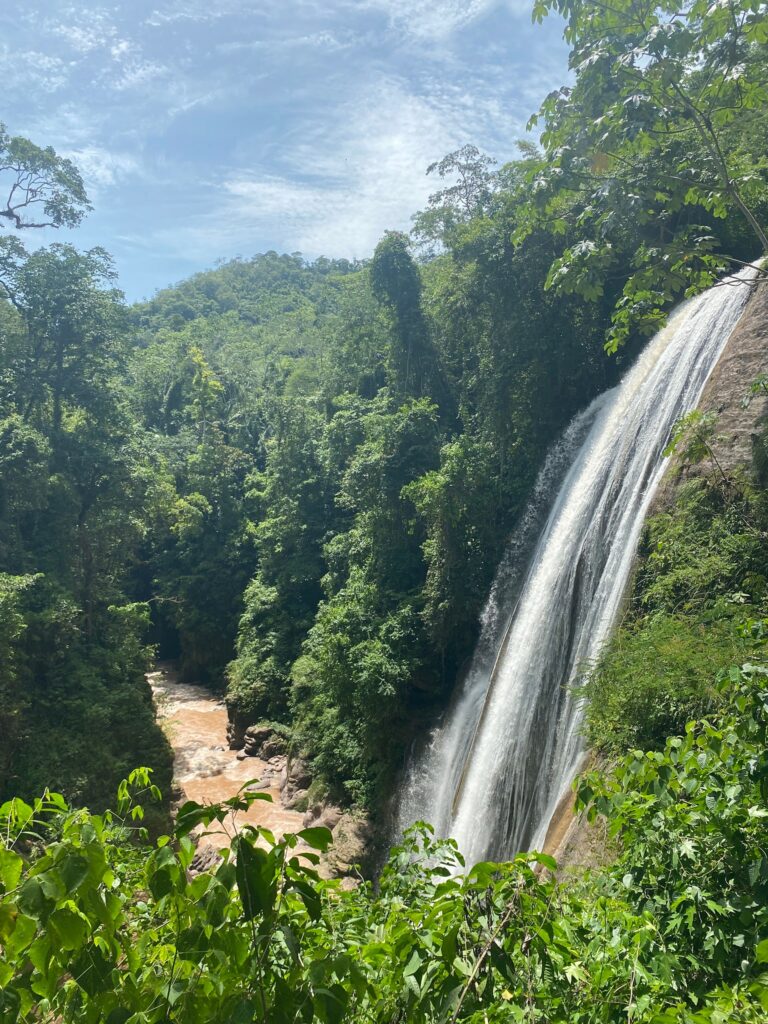By SevenSenses founder Madelon Eelderink
Last year I excitedly started the Ecosystem Restoration Design Course on Earth Day. Well, now that it has finished I’m even more excited! First and foremost because it made me realize how incredibly easy it can be to ignite restoration of natural ecosystems and let nature do the rest. I don’t need to be a biologist, nor an engineer to give nature a little nudge to restore itself. I joined the course with my Participatory Action Research (PAR) glasses on as I’m curious to see how PAR can contribute to restoring ecosystems and what that would look like. In this first blog I share my thoughts on how to get locals ‘on board’ of your ecosystem restoration project.
“It’s hard to get locals on board!”
The teachers – ecosystem restorers- often speak about the difficulty of getting the local community ‘on board’. They share tips such as: be humble, immerse yourself in the local culture, gain their trust, be transparent and tell them why it is important what you are doing. Although I do agree with most of their tips, I do feel there is something important missing here. It predominantly starts from the idea that local people have to join ‘our’ restoration project – in the form of volunteering, helping to protect the area or at least accepting our work in their area. But in my experience, most people don’t want to join other people’s project, they want to join their own project! Don’t get me wrong, I’ve seen some projects where local people with time really started to gain a sense of ownership over the project, but I believe we need a different starting point to increase this sense of ownership.
Let go of YOUR plan
Here it may get a little tricky and if you have your project design ready and are super eager and motivated to start immediately, you may not want to read it (I suggest you stop reading this blog here, then). What I strongly believe is that the best and most intense sense of ownership among local people is achieved when you get at location without any specific plan. To let go of your ideas on what should be done when and where and how. To first immerse yourself in the area, join the local community activities, just BE there. Have informal conversations with people about their lives, and what gets them up every day. Once you feel you have a basic relation of trust with people, you can start having more in-depth conversations (or interviews if you may want to call it so) about what the area means to them and what challenges they face in using the area (for whatever that may be). What they would like to change for the better. You get to learn so much from locals in what works and what doesn’t, and in my experience, on top of that, people are way more open to your intentions and ideas once they first have been able to share theirs.
Let them co-create their plans
But even then, as a PAR Practitioner, you don’t explicitly share YOUR ideas (yet). You bring all the knowledge and perspectives -gained from your conversations with involved people- (anonymously) together and add yours (also anonymously) only where you feel it contributes to the total body of knowledge. You can do so by making one or more visualisations that reflect their ‘shared truth’. Next, you invite them to reflect on those visualisations together, fill in missing pieces of information, let them draw conclusions and brainstorm on what actions to take. What happens next is always so fascinating to me: when you allow them to do this together, they build upon each other’s ideas and come up with action plans that I (and them individually) would have never thought of! Although your initial plan may look different now, I am sure you can still achieve your goals to restore the ecosystem. But now with people who want to help right from the start because they feel it is also their project!
Courage + patience = ownership!
So, the title of this blog is a little misleading. To me, there’s no such thing as ‘getting locals on board of your project’. What would happen, if you want to restore an ecosystem and you can co-create action plans together with the local community, in which you can still do what you intended to do, yet it is conglomerated and merged with the ideas of the locals? Ideas over which they feel ownership and over which they feel intrinsic motivation to make it a success? It may require some courage to let go of your initial plan and some patience as you can’t start restoring the ecosystem immediately, but I would suggest to anyone who’s in the starting blocks of restoring a piece of land: if you dare, try it out!
Want to get trained in PAR first? Check out the different trainings we offer at the SevenSenses Academy. Or click here for a ‘quick and dirty’ description of the different PAR stages to go through in a typical PAR. Prefer something in between? Order the Handbook Participatory Action Research written by SevenSenses founder Madelon Eelderink (in Dutch).
There’s more blogs following up on PAR for ecosystem restoration design. Want to be the first to know once the next blog is published? Subscribe for SevenSenses stories! Add your email in the footer of this page and click ‘yup, I’m in’!

